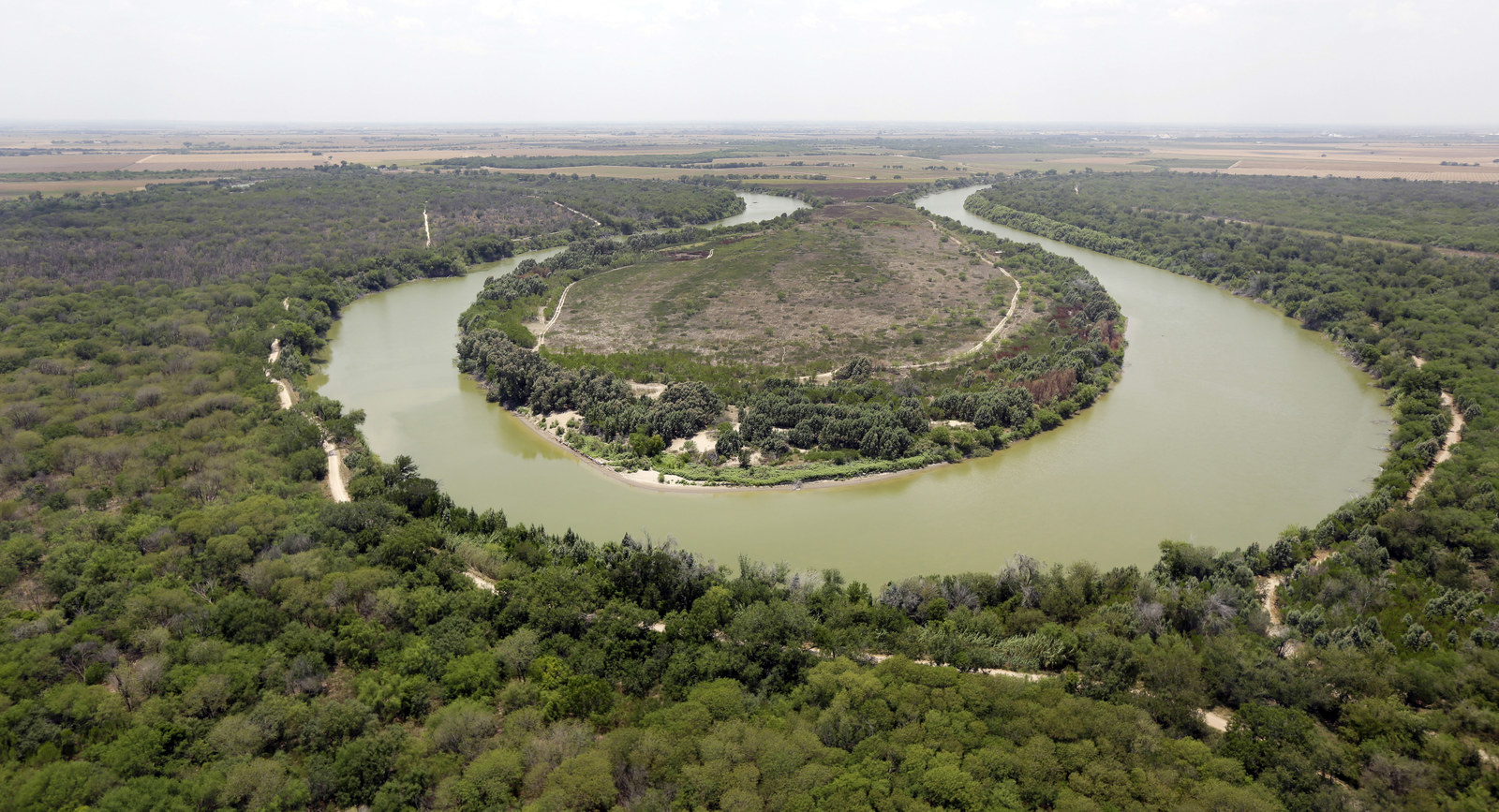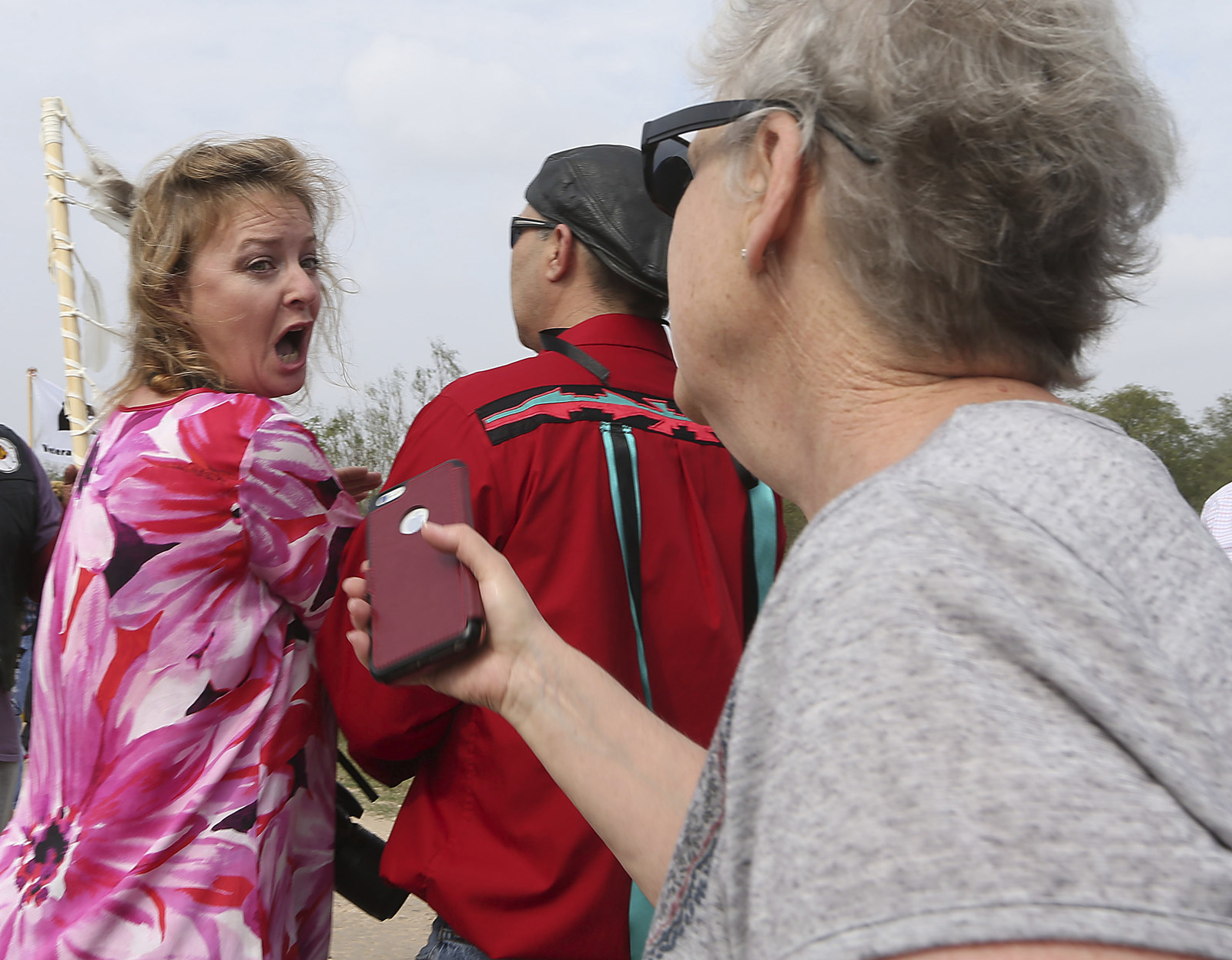Pending construction of a section of President Trump's border wall in Texas has tribal members, environmentalists, and other opponents scrambling to protect the land, possibly setting up yet another showdown on the ground.
Protesters gathered this week at the National Butterfly Center in Mission, Texas, which has for months sought to stop a wall from cutting through its property. Construction is slated to begin sometime in February, so when construction equipment showed up nearby on Sunday, fears arose that ground could be broken soon on the roughly 30-foot-tall steel and concrete barrier.
According to the US Customs and Border Protection, a levee will be raised about 2 miles north of the Rio Grande — the border between the US and Mexico — into a concrete wall topped by steel posts and illuminated by floodlights. South of the wall, 150 feet of land will be cleared, and a road will be paved for border enforcement work.
Funding for the project was approved by Congress in last year's appropriations bill, but opponents say the wall will rob residents of their land, cut off historic landmarks, and hurt the local ecotourism economy. Construction will destroy the habitat, and the wall will impede the ability of animals — including critically endangered species like the ocelot — to find food and mates throughout the region, critics say.
Converting the sloping levee into a wall will also trap wildlife when the river floods, leaving them to drown, and planned 24-hour security lighting will cause severe disruptions of the daily rhythms of plants and animals, opponents of the project have added.
Marianna Treviño-Wright, the butterfly center's executive director, could not be reached by BuzzFeed News for an interview, but told the Monitor newspaper, "It's all bad."
The Department of Homeland Security did not immediately respond to a request for comment on opponents' main criticisms. However, in a statement in October, the department said the federal government "remains committed to environmental stewardship."
"DHS has been coordinating and consulting, and intends to continue doing so, with other federal and state resource agencies to ensure that impacts to the environment, wildlife, and cultural and historic artifacts are analyzed and minimized, to the extent possible," the department added.
Construction appears like it will begin on federal wildlife refuge land next to the butterfly center, where CBP officials don't need court approval or to compensate landowners to take over. But the federal land only accounts for about a half mile of the planned wall segment, said Scott Nicol, a local resident and volunteer with the Sierra Club of the Lower Rio Grande Valley.
The means once that half mile of wall is built, construction will have to stop to wrangle land rights from residents, businesses, and the state, a process that could take years, Nichol said.
"It really speaks to the fact that the whole project is politics and optics," he said. "It’s not anything practical. It’s not anything that does anything for border communities, to promote safety, national security, or anything else."
The Trump administration is also sidestepping public hearings where residents could speak out. The DHS has waived 28 laws, including the Endangered Species Act, the Native American Graves Protection and Repatriation Act, and the Archaeological and Historic Preservation Act, to expedite construction, citing the "border security mission" and "gaps" between existing border fences.

In the past, that waiver power was used only a handful of times for specific border projects at the direction of Congress, said Jean Su, an attorney for the Center for Biological Diversity. Her organization and others have sued the government over the new waivers, arguing DHS is abusing its power and violating the Constitution.
It's essential that the public be able to weigh in on construction plans, from nature lovers to residents concerned about their families' air and water quality, she told BuzzFeed News.
"When you eliminate that, you eliminate our ability to stand up for ourselves and the democratic process," she said. "And that’s why these waivers are so scary, they can occur essentially along the entirety of all the borders of the United States, without any public input and the ability to fight back."
On Monday, Su and others called on a federal judge to throw out the waivers. A decision could be reached in about a month. If construction starts before then, Su said the group is keeping their legal options open.
"Building the wall is condemning our wildlife and communities along the border to hell," she said. "This wall is so heartbreakingly destructive to one of our most precious ecosystems on this continent."
As the court case progresses in Washington, DC, a local tribe is also making its voice heard on the ground. Leaders organized a march on Monday, and Juan Mancias, tribal chairman of Carrizo Comecrudo, is now working to create protest camps, like those led by the Standing Rock Sioux against the Dakota Access Pipeline.
The wall construction is threatening local historic sites as well as Native American graves, he told KVEO.
"We've had enough. They are digging up our people," he said. "Anytime that you dig somebody up and you put them somewhere else that's just ethnic cleansing all over again. Genocide."
When DHS issued the waivers in October, it described construction as necessary given the illegal border activity in the region.
"The Rio Grande Valley Sector remains an area of high illegal alien activity and marijuana seizures," the DHS said. "In fiscal year 2017, the United States Border Patrol apprehended over 137,000 illegal aliens and seized approximately 260,000 pounds of marijuana and approximately 1,192 pounds of cocaine in the Rio Grande Valley Sector."
But longtime residents say there's simply no crisis. In December, Luciano Guerra, who works at the butterfly center, wrote an op-ed in the Washington Post about his one-time support of Trump and his dismay over the border wall plans.

Nicol, who lives in nearby McAllen with his family, agreed the DHS's rationale isn't based on facts. Crime statistics show border communities are safe, he said. Most drug smuggling takes place at ports of entry — not the habitat he hopes to protect. He conceded there are people arrested while crossing the border, but said a wall is not the answer.
"The majority of those people being apprehended are asylum-seekers," he said. "They’re not scary. They’re families. They’re children that are fleeing horrific violence."
He added he hopes lawmakers seeking a compromise with Trump don't give any more money toward walls or fences at the border.
"They’re going to have hundreds more people who are going to have their property condemned, they’re going to have wildlife refuges that are torn apart," he said. "The whole project is absurd. There’s no need for it. It doesn’t improve anything. It doesn’t make anyone safer."
